supply chain finance
description: financial practices designed to optimize cash flow and liquidity between trading partners in a supply chain
9 results

The Pyramid of Lies: Lex Greensill and the Billion-Dollar Scandal
by
Duncan Mavin
Published 20 Jul 2022
And he spent some of his time at the bank meeting with a broad range of colleagues – grey-haired City veterans as well as eager new associates – across whatever business line or department fascinated him next. He was especially keen to meet people who worked on something innovative or unusual. One of those bankers was Lex Greensill, who was making waves with supply chain finance. Supply chain finance was exactly the kind of esoteric business that piqued Heywood’s interest. When he met with Lex, Heywood was intrigued by the potential for supply chain finance to help small to medium-sized enterprises (SMEs). He thought Lex was interesting, clever, charismatic in a way, and deeply knowledgeable about the product he was working on. Though Lex and Heywood were in different spheres, their paths crossed from time to time.
…
Investors had pulled billions out of Lex’s Credit Suisse supply chain finance funds since the pandemic hit. Lex went on: ‘You will recall that the Bank established a supply chain finance facility back in 2010 (as a part of your asset purchase facility). We think there is an urgent need to re-establish the same – given the millions of businesses that now rely on supply chain finance.’ It was a reference to the BofE’s move to support Lex’s supply chain finance programme at Morgan Stanley a decade earlier. If you could do it then, Deputy Governor, you can do it again now, Lex seemed to be saying. Greensill and Cameron were pushing for a meeting with Cunliffe. A couple of days later, they were given a call with a couple of more junior officials.
…
Lex was also evangelical about a unique-sounding idea for a new business based around providing short-term loans to clients who were backed by invoices from their own suppliers. It was a form of factoring, or supply chain finance, that involved funding short-term loans to clients backed by the invoices they owed their suppliers. What Lex was pitching was a version of the blueprint put together by Robert Cleland and his team at OzEcom and Transaction Risk Mitigation (TRM). Lex’s potential was not hard to spot – even if he hadn’t gone to the right school. His enthusiasm was infectious, and his supply chain finance idea was potentially a money-spinner, even if it wasn’t quite the winning lottery ticket Lex claimed it would be.
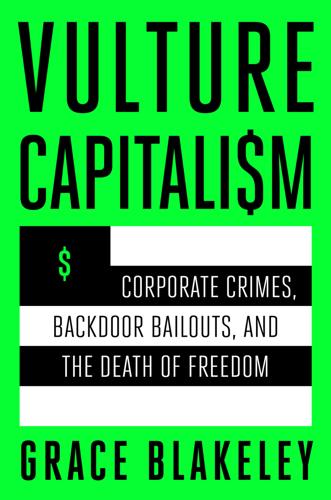
Vulture Capitalism: Corporate Crimes, Backdoor Bailouts, and the Death of Freedom
by
Grace Blakeley
Published 11 Mar 2024
Greensill later told an interviewer that watching his parents struggle while waiting for outstanding payments was what kindled his interest in finance.67 Eventually he traveled to London and started working for Morgan Stanley, where he spent most of his time trying to “turbocharge” the boring business of “supply chain financing.”68 A few years later he founded Greensill Capital, which specialized in this apparently mundane activity. So what, exactly, is “supply chain financing”? In a world where the production of even a single commodity takes place within multiple firms across different countries, there are always lots of invoices to collect and pay. Traditionally, banks would provide financing for firms when they paid invoices, or while they waited for invoices to be paid. But in the postcrisis world of low interest rates and tight regulation, supply chain financing was no longer profitable for traditional banks.
…
Masayoshi Son, the owner of the investment firm SoftBank, whom we first encountered in chapter 5, rode to Credit Suisse’s rescue, injecting $1.5 billion into one of the funds.71 In return, Son demanded that the fund lend only to Greensill Capital. SoftBank pumped hundreds of millions of dollars into Credit Suisse’s specialist supply chain finance fund, which went straight into Greensill’s coffers. In return for Son’s generosity, Greensill lent generously to many of the firms in which SoftBank had a stake. This arrangement allowed SoftBank to lend to Credit Suisse, which lent to Greensill, which lent to SoftBank-owned firms. It was, in essence, a giant house of cards.
…
Staff would, of course, have to pay interest on the loans—interest rates may have been low initially, but once they were trapped into loan agreements secured against future pay, Greensill could quite easily have turned the screws on already financially stretched NHS employees. The company was also reportedly hoping to use the relationships it was building within the NHS to sell the institution more lucrative supply-chain-financing products.79 And it wasn’t just David Cameron lobbying on behalf of Greensill. Former senior civil servant Bill Crothers was the head of the Crown Commercial Service (CCS), which manages how the government procures services from the private sector—allegedly to maximize “value for money.” Crothers earned more than £150,000 a year determining how to spend the CCS’s £15 billion budget.80 This, apparently, was not enough for Crothers, who took on an advisory role at Greensill while still employed by the civil service.
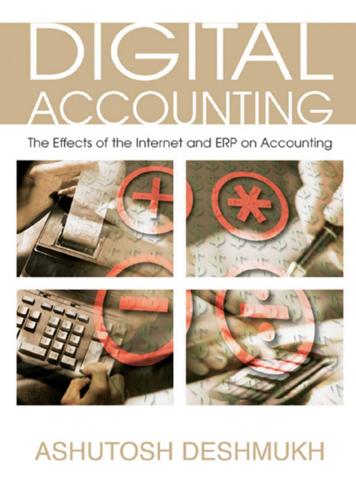
Digital Accounting: The Effects of the Internet and Erp on Accounting
by
Ashutosh Deshmukh
Published 13 Dec 2005
Supply chain costs Logistics Logistics Production and warehousing Suppliers Logistics Distributors Logistics Wholesalers retailers Customers ERP software Suppliers’ suppliers supplier network Distributors’ distributors distributor network Cost flow SO processing costs Transportation-in costs PO processing costs Product costs Material costs Supply chain inventory costs SO processing costs lost sales Customer profitability?? Transportation-out costs Returns costs Warranties costs Service costs Supply chain financing costs Supply chain costs by definition include costs across the supply chain, including order processing costs, transportation-in and -out costs, material costs, product costs, warehousing, and supply chain-wide inventory and financing costs. These costs are described below. • Order processing costs: Order processing costs include processing of POs for raw materials and sales orders for finished goods; order capture, validation, sourcing and distribution.
…
These may be calculated as the total cost of ownership and must be minimized, since these may be borne by the producer. • Supply chain inventory costs: One of the objectives of SCM is to decrease inventories throughout the supply chain, since inventories are costly. Inventory costs include financing costs, handling costs, wastage and storage costs, among other things. • Supply chain financing costs: These costs capture funds invested in managing the supply chain. Collaborative activities must be planned and appropriate software purchased and operationalized — these activities consume money and time, along with time invested by management. Inventory carrying costs are sometimes included in this category.
…
Index 393 SSL 335 Standardized Generalized Markup Language (SGML) 44 standard manifest 2 stateful inspection 351 statistical analysis 268 steganography 329 stored value cards 169 straight-through processing (STP) 299 strategic enterprise management (SEM) 308 strategic management 293 STN (SunGard Transaction Network) 299 STP (straight-through processing) 299 Structured Query Language (SQL) 19 SUNGARD 297 SunGard Transaction Network (STN) 299 SunGard Treasury System 297 supplier data interchange 18 supplier life cycle management (SLM) 193 supplier relationship management (SRM) 33, 191, 193 supplier relationship management/eprocurement 40 supplier selection strategy 194 supply chain cockpit (SCC) 248 supply chain collaboration 247 supply chain cost accounting 251 supply chain costs 251 supply chain design 235 supply chain event management (SCEM) 243 supply chain execution 237 supply chain financing costs 253 supply chain inventory costs 253 supply chain management (SCM) 33, 40, 232 supply chain monitoring 247 supply chain operations reference model (SCOR) 245 supply chain performance management (SCPM) 244 supply network planning 246 supply planning 235 symmetric encryption (private key) 346 system integrity techniques 362 SysTrust 372 T T&E (travel and entertainment )expenses 215, 219 TAD (trade acceptance drafts) 181 tags 44 target costing 254 TCP/IP 114, 353 telemarketing 137 thick client 21 thin client 21 third-party add-on products 32 three-factor authentication 343 trade acceptance drafts (TAD) 181 transaction manager 299 transaction set 93 TransactionVision 364, 367 translator 96 transportation builder 246 transportation planning 247 transportation-in and -out costs 252 travel and entertainment (T&E) expense 215, 219 treasury function 294 Trojan horses 327 trust services 372 tunneling 353 two-factor authentication 343 U UCITA (Uniform Computer Information Transactions Act) 332 UETA (Uniform Electronic Transactions Act) 332 UNIX (uniplexed information and computing system) 24 U.S.
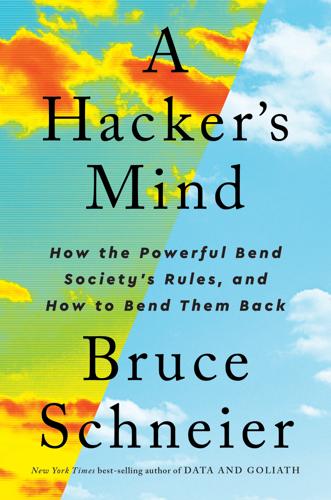
A Hacker's Mind: How the Powerful Bend Society's Rules, and How to Bend Them Back
by
Bruce Schneier
Published 7 Feb 2023
They can use this to saddle the firms they acquire with debt, extract money from them, leave them with more debt, then sell them for even more profit—with all the debtors left holding the (empty) bag. Consider the case of Greensill Capital, which collapsed spectacularly in 2021. Its unsustainable expansion over the course of ten years—from supply-chain finance startup, to multinational middleman with a $4.6 million debt load, to insolvency—was accelerated by investments and loans from SoftBank, who made millions in funds available in spite of the company’s increasingly fishy accounting. There’s nothing illegal about any of this. VC funding and private equity are such a normal part of our economy that it might seem odd to call them hacks.
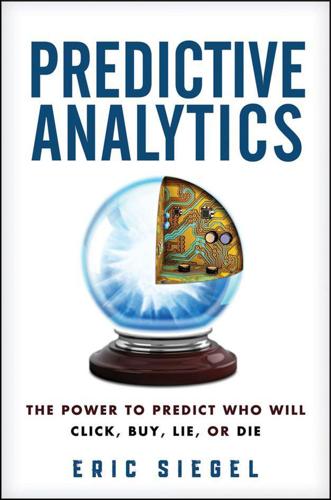
Predictive Analytics: The Power to Predict Who Will Click, Buy, Lie, or Die
by
Eric Siegel
Published 19 Feb 2013
On a ship this big, there are bound to be some leaks, especially given the apparent short attention span of today’s technology worker. HP is a progressive analytics leader. Its analytics department houses 1,700 workers in Bangalore alone. They boast cutting-edge analytical capabilities across sales, marketing, supply chain, finance, and HR domains. Their PA projects include customer loss prediction, sales lead scoring, and supplier fraud detection. Gitali Halder leads HP’s analytics team in Bangalore focused on human resources applications. With a master’s in economics from the Delhi School of Economics and several years of hands-on experience, Halder is your true PA powerhouse.
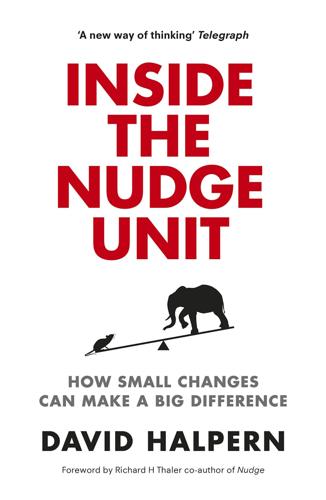
Inside the Nudge Unit: How Small Changes Can Make a Big Difference
by
David Halpern
Published 26 Aug 2015
Despite the climate of fear, we showed them how such loans to small businesses could achieve results at least as good as they could get from ‘expanding into central Europe’. But making the change rested as much on a mindset shift in the heads of the relevant chief execs as it did on a structural change to state funding. Similarly, extensive efforts were made to encourage large firms to engage in supply chain finance. While Rolls-Royce, with its brand name and cash holdings, might be able to borrow from banks at 2 per cent, its many suppliers might struggle to get banks to lend to them at less than 10 per cent, if at all. But if Rolls-Royce were to underwrite the loan, in effect telling the bank that they would be paying the small business for its work in a specified number of days, the small business could now borrow at rates comparable to that of Rolls-Royce.

Gambling Man
by
Lionel Barber
Published 3 Oct 2024
On 10 January 2020, Masa met with the Indonesian president and pledged further financial support. All of SoftBank’s family of companies would contribute to the city’s high-tech ecosystem: ARM, Grab, even a revived WeWork providing office space. When asked where the funds would come from, Masa pointed to Lex Greensill, the Australian supply-chain finance entrepreneur backed by the Vision Fund. Greensill, a former Queensland melon farmer, aspired to become a global fintech champion. With his four private planes, Savile Row suits and the former British prime minister David Cameron on the payroll, he looked the part. Lex was the money guy, Masa told ‘Jokowi’ on footage captured on Indonesian TV.
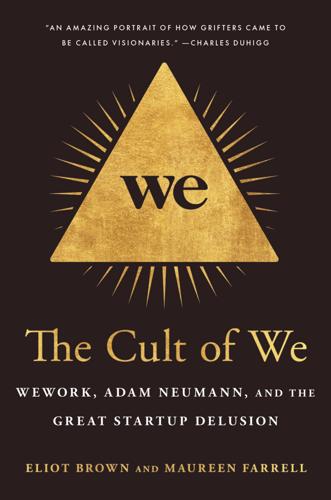
The Cult of We: WeWork, Adam Neumann, and the Great Startup Delusion
by
Eliot Brown
and
Maureen Farrell
Published 19 Jul 2021
Vision Fund’s profits were up 66 percent: Mayumi Negishi, “SoftBank’s Vision Fund 2 Plans to Begin Investing as Soon as Next Month,” Wall Street Journal, Aug. 7, 2019. sprinted north over Lake Ontario: Flight path for N1872, FlightAirMap website, accessed Aug. 26, 2019. SoftBank had just invested in Greensill’s business: Duncan Mavin, “SoftBank Invests $800 Million in Supply Chain Finance Firm Greensill,” Wall Street Journal, May 13, 2019. CHAPTER 35: PARANOIA story published after his departure: Kirsten Grind, Sarah Krouse, and Jim Oberman, “Star Fidelity Manager Gavin Baker Fired over Sexual Harassment Allegations,” Wall Street Journal, Oct. 12, 2017. T.
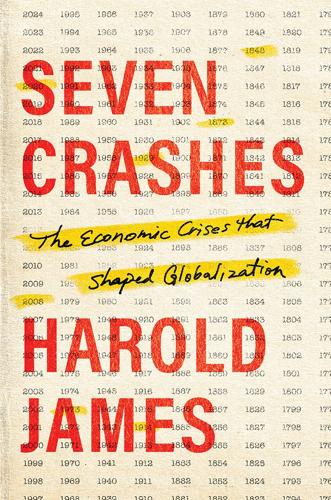
Seven Crashes: The Economic Crises That Shaped Globalization
by
Harold James
Published 15 Jan 2023
In May 2020, for instance, Greensill suggested that conventional banking “will be replaced with a newer model that is based on big data, and I think that tectonic shift is going to impact all players in the market. We’re just at the very earliest stages of that.”88 He looked like a financial Wizard of Oz. Greensill engaged in a particular apparently niche activity called supply-chain finance. Historians of finance see this business as the oldest application of finance. Merchants buy and then ship goods, but they do not have the money to pay for those products until they have sold or distributed them. Financing the transaction, giving the merchant a credit on the security of an invoice or a promise to pay, is thus an activity that can lead to otherwise unmet needs being satisfied.